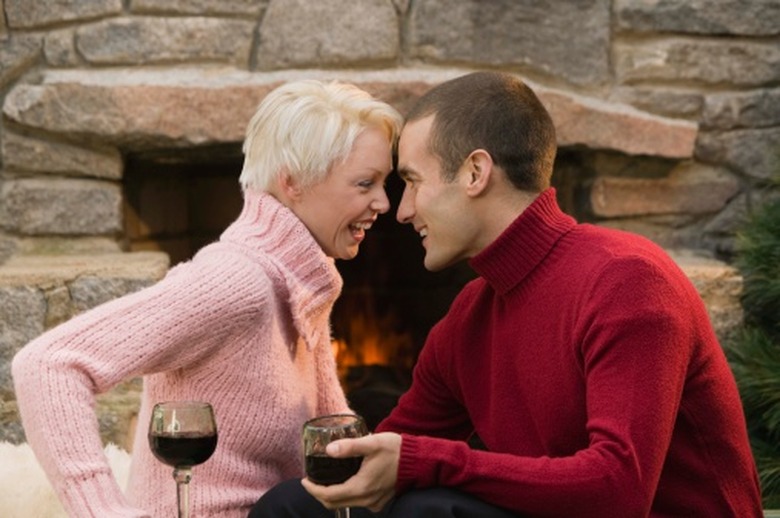Types Of Wood Not To Burn In A Fireplace
A fireplace may look almost indestructible, but it has a sensitive core that can cause trouble if mistreated. People sometimes abuse their fireplaces by failing to keep them clean and by burning the wrong kind of fuel. In general, only wood or artificial logs should be burned in a fireplace, but not all woods are suitable. Some produce an abundance of creosote that can clog the flue and chimney, some produce sparks, and those that contain harmful chemicals can produce toxic emissions. Avoiding inappropriate wood will keep your fireplace functioning well and keep you safe and warm.
Unseasoned Wood
Freshly cut firewood is almost always too wet to burn, and usually must dry for an entire year, or season, before it makes for suitable fireplace fuel. Unseasoned firewood not only burns slower and produces less heat than seasoned firewood, it also produces more smoke. Depending on the species, the smoke can be high in creosote, which is a flammable substance that collects inside the chimney and clogs it or eventually ignites to start a chimney fire. You can distinguish seasoned firewood from unseasoned because it's lighter and makes a cracking sound when you hit it with another piece of wood.
Chemically Treated Wood
While you can burn some types of construction scrap in your fireplace, avoid chemically treated wood. One variety is pressure-treated lumber, distinguishable by its green or reddish-brown coloring and the perforations on its surface. The chemicals used to pressure-treat wood are toxic, and burning the wood releases these chemicals into the environment. Plywood is another product unsuitable for burning. Like the chemicals in pressure-treated wood, the glue used for laminating the individual layers of wood in plywood is toxic. Similarly, avoid burning painted wood or wood coated with adhesive or any other synthetic coating.
Found Wood
Dry tree branches and other types of wood you find in the forest may make good kindling, but avoid burning driftwood. It has a high salt content, and the smoke it produces is corrosive and will damage your chimney. If you can verify that a piece of wood you find contains no chemicals or plastic and is not pressure-treated, it should be safe to burn, but you can't always make this verification, especially if the wood comes from a junk pile or a construction project. If you're not sure, don't risk your health or your fireplace by burning it.
Wood That Produces Sparks
Sparks that fly from your fireplace can damage your floor, burn you and may even start a fire, so it's best to not burn the types of wood that produce them, such as wet tree branches, and branches with dried leaves or needles. The latter example includes your old Christmas tree. Besides having an abundance of dry needles that can catch fire with sudden ferocity, a Christmas tree has a trunk laden with flammable sap that can actually explode. Moreover, the sap is full of creosote that can clog your chimney.
